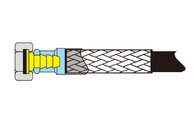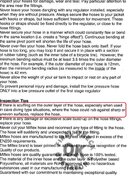What do you guys think of the newer "Miflex XT" hoses? They're supposed to provide the flexibility of a braided hose, with negative buoyancy and a smooth surface. I'm not sure if it solves the problem where the interior crystallizes and breaks apart after 5 or so years.
Regulator Miflex XT-Tech Hose
I use miflex hoses on my single tank rec diving setup. My miflex hoses are almost 5 years old now so I'm replacing them with these. I'm curious what opinions are from folks who have checked them out. I guess they're too new for any to have degraded and broken apart inside, so I'll bet nobody knows for sure if they're susceptible to that problem but it's worth asking just in case.
Regulator Miflex XT-Tech Hose
- Similar characteristics of traditional rubber hose yet benefits of a braided flex hose
- Smooth polyurethane outer surface reduces abrasion
- Braided layer includes Kevlar® yarn reinforcement
- Negative buoyancy - Lighter in weight than traditional rubber hoses
- Fittings are marine grade nickel plated brass
I use miflex hoses on my single tank rec diving setup. My miflex hoses are almost 5 years old now so I'm replacing them with these. I'm curious what opinions are from folks who have checked them out. I guess they're too new for any to have degraded and broken apart inside, so I'll bet nobody knows for sure if they're susceptible to that problem but it's worth asking just in case.







